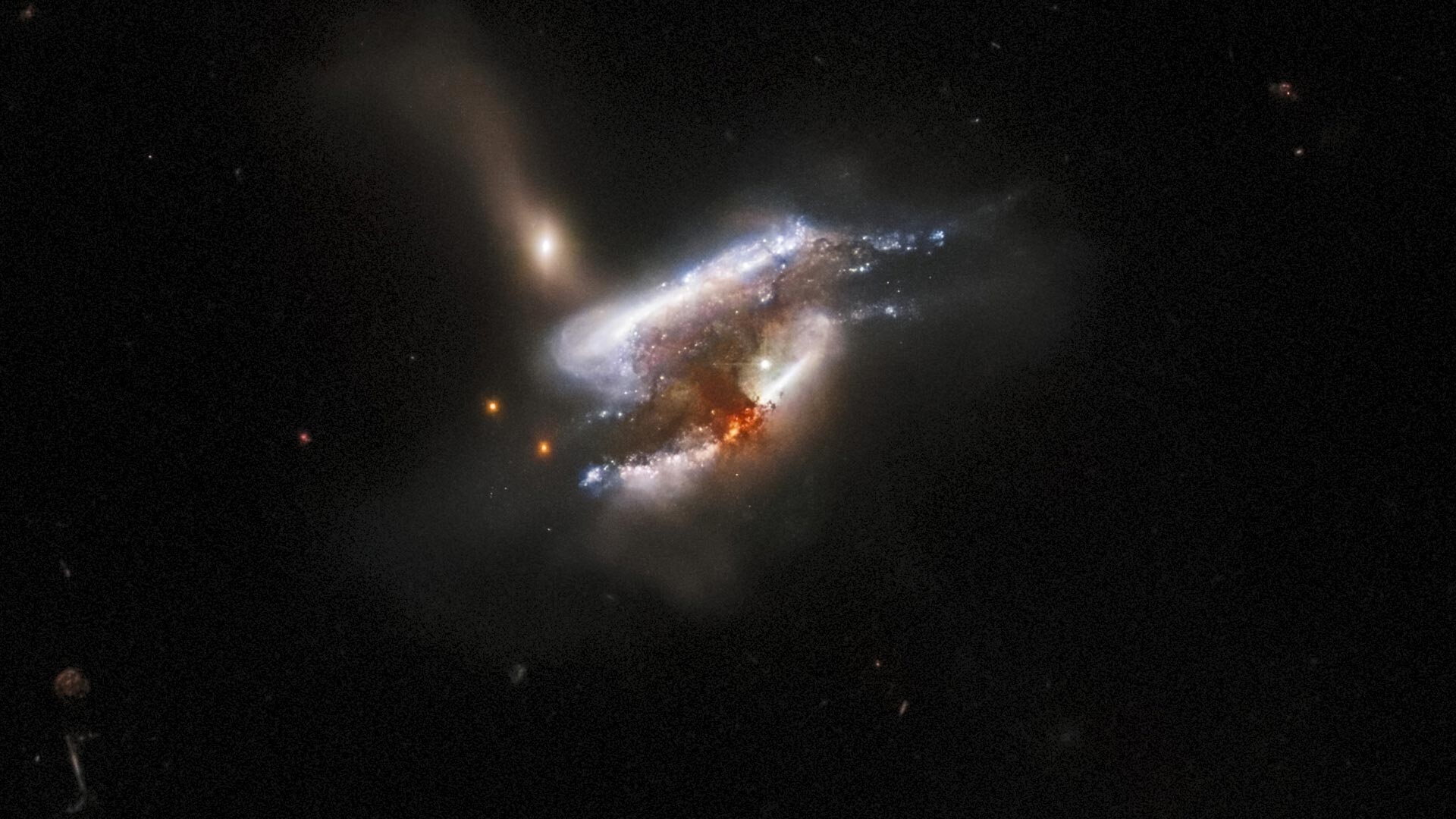Gambar Teleskop Luar Angkasa Hubble dari IC 2431, yang tampaknya mengalami penggabungan tiga galaksi, dan campuran turbulen pembentukan bintang dan distorsi pasang surut yang disebabkan oleh interaksi gravitasi dari trio galaksi ini. Kredit: ESA/Hubble & NASA, W. Keel, Survei Energi Gelap, DOE, FNAL, DECam, CTIO, NOIRLab/NSF/AURA, SDSS Kredit: J. Schmidt
Massa berdebu dan pusaran bintang terang dalam gambar ini adalah penggabungan galaksi jauh IC 2431, terletak 681 juta tahun cahaya dari Bumi di konstelasi Cancer. itu[{” attribute=””>NASA/ESA Hubble Space Telescope has captured what appears to be a triple galaxy merger in progress, as well as a tumultuous mixture of star formation and tidal distortions caused by the gravitational interactions of this galactic trio. The center of this image is obscured by a thick cloud of dust — though light from a background galaxy can be seen piercing its outer extremities.
This image is from a series of Hubble observations investigating weird and wonderful galaxies found by the Galaxy Zoo citizen science project. Using Hubble’s powerful Advanced Camera for Surveys (ACS), astronomers took a closer look at some of the more unusual galaxies that volunteers had identified.
The original Galaxy Zoo project was the largest galaxy census ever carried out, and relied on crowdsourcing time from more than 100,000 volunteers to classify 900,000 unexamined galaxies. The project achieved what would have been years of work for a professional astronomer in only 175 days, and has led to a steady stream of similar astronomical citizen science projects.
Later Galaxy Zoo projects have included the largest ever studies of galaxy mergers and tidal dwarf galaxies, as well as the discovery of entirely new types of compact star-forming galaxies.

“Ninja twitter bersertifikat. Ahli internet. Penggemar budaya pop hardcore. Baconaholic.”
You may also like
-
Aturan matematika ditemukan di balik distribusi neuron di otak kita
-
Para ilmuwan menemukan penjelasan untuk lubang gravitasi raksasa di Samudra Hindia
-
Peta baru yang akurat dari semua materi di alam semesta dirilis
-
Para ilmuwan mengatakan sepasang bintang yang sangat langka berperilaku sangat ‘aneh’
-
Lima Angsa Tewas Setelah Terbang Ke Saluran Listrik Hinkley | Berita Inggris

